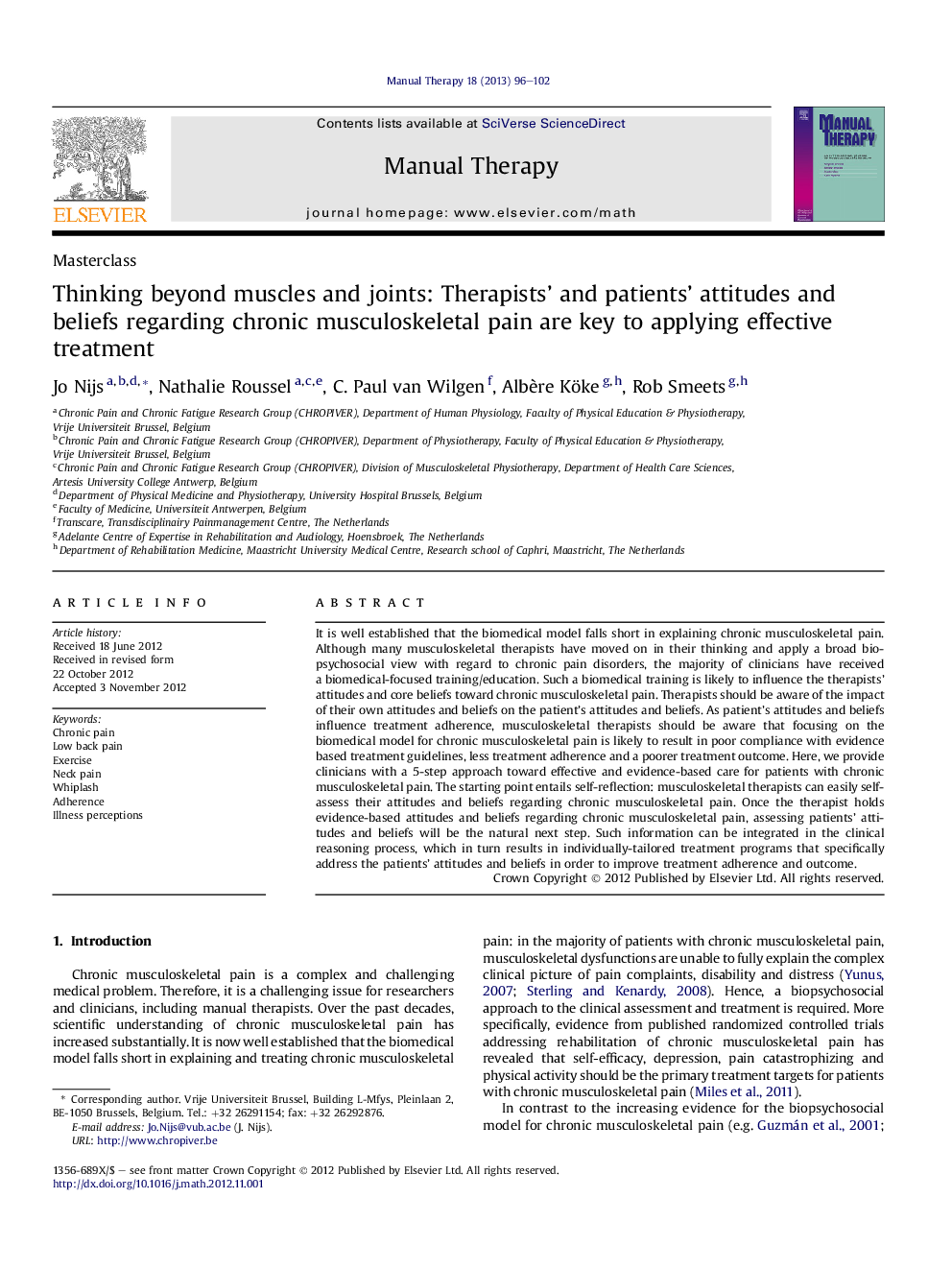| Article ID | Journal | Published Year | Pages | File Type |
|---|---|---|---|---|
| 2625289 | Manual Therapy | 2013 | 7 Pages |
It is well established that the biomedical model falls short in explaining chronic musculoskeletal pain. Although many musculoskeletal therapists have moved on in their thinking and apply a broad biopsychosocial view with regard to chronic pain disorders, the majority of clinicians have received a biomedical-focused training/education. Such a biomedical training is likely to influence the therapists' attitudes and core beliefs toward chronic musculoskeletal pain. Therapists should be aware of the impact of their own attitudes and beliefs on the patient's attitudes and beliefs. As patient's attitudes and beliefs influence treatment adherence, musculoskeletal therapists should be aware that focusing on the biomedical model for chronic musculoskeletal pain is likely to result in poor compliance with evidence based treatment guidelines, less treatment adherence and a poorer treatment outcome. Here, we provide clinicians with a 5-step approach toward effective and evidence-based care for patients with chronic musculoskeletal pain. The starting point entails self-reflection: musculoskeletal therapists can easily self-assess their attitudes and beliefs regarding chronic musculoskeletal pain. Once the therapist holds evidence-based attitudes and beliefs regarding chronic musculoskeletal pain, assessing patients' attitudes and beliefs will be the natural next step. Such information can be integrated in the clinical reasoning process, which in turn results in individually-tailored treatment programs that specifically address the patients' attitudes and beliefs in order to improve treatment adherence and outcome.
